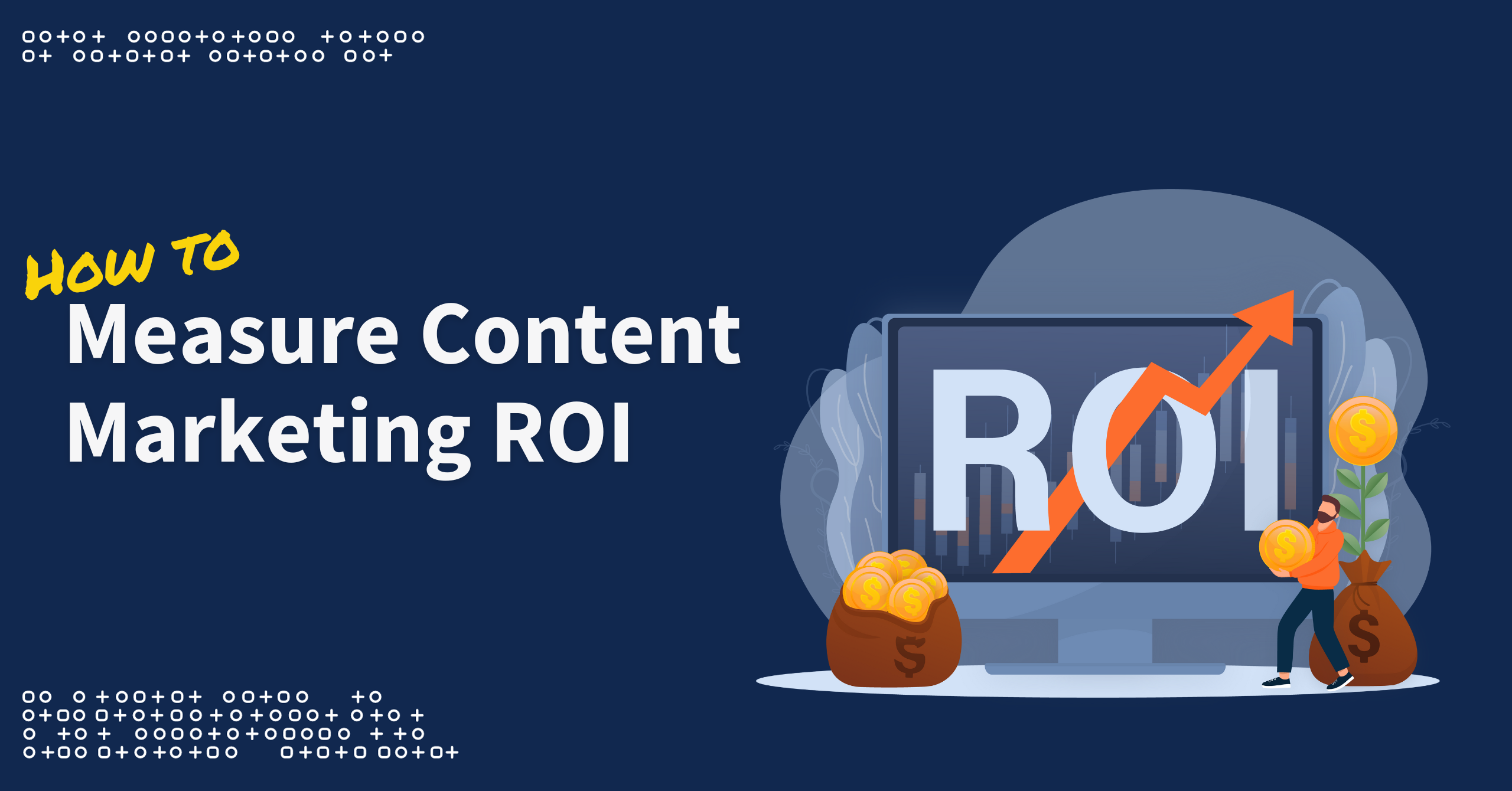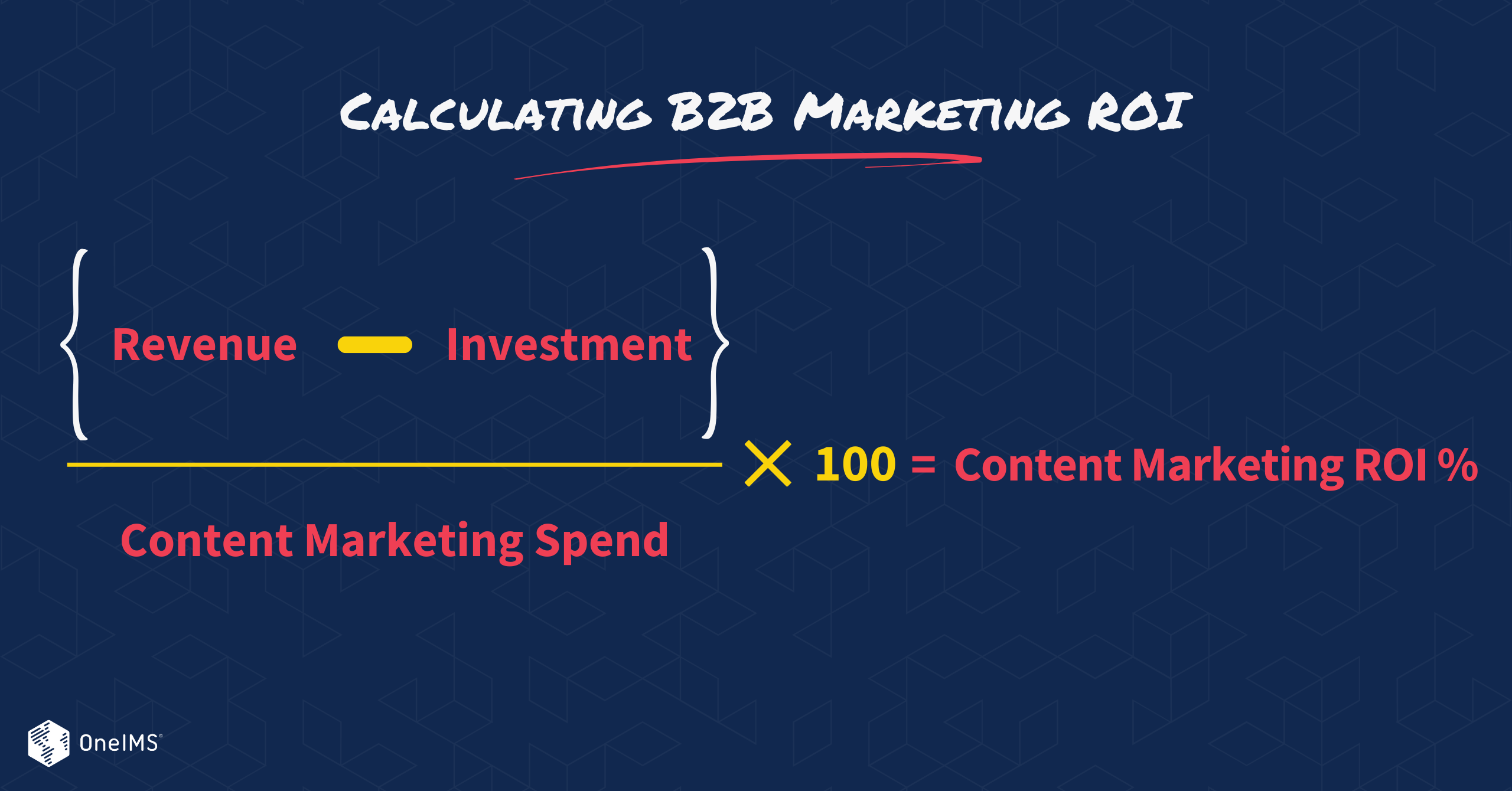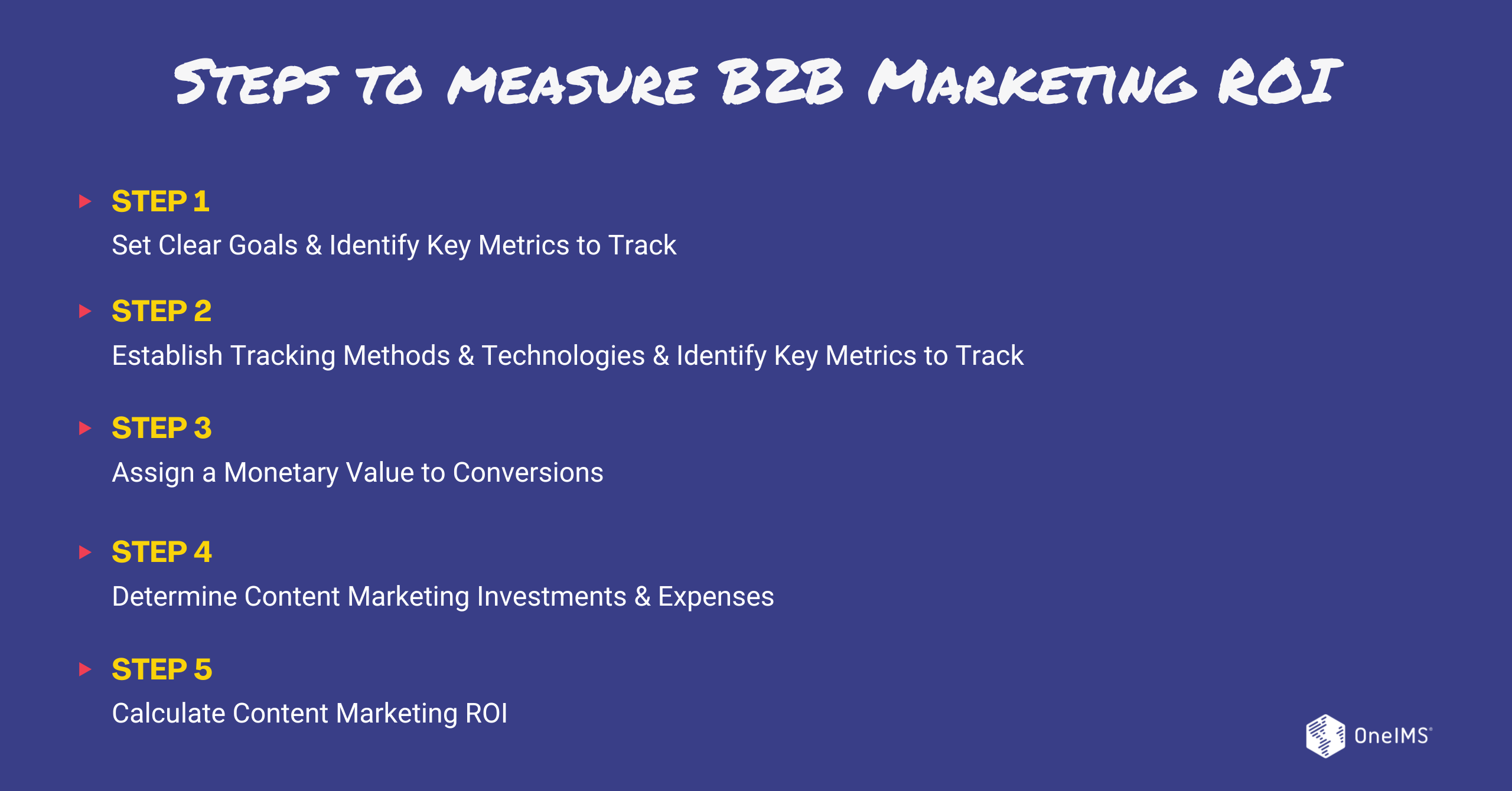More and more business-to-business (B2B) companies are finding value in content marketing—and many plan to expand their investments in this area next year. In fact, 45% of B2B marketers anticipate their content marketing budget will increase in 2024.
However, as these businesses allocate more of their budgets to content creation and distribution, they want to know whether they are getting their money’s worth. Are their investments paying off? How can they tell?
The good news is that content marketing success is measurable. With the right strategies, tools, and techniques in place, you can track each channel and campaign and calculate your B2B company’s return on their content marketing investment.
What Is Content Marketing ROI?
Content marketing is an ongoing process. There’s no finish line to cross; instead, every time your marketing team publishes, optimizes, and shares a piece of content, you hope it will perform better than the last piece and lead to more conversions.
The best way to measure this performance is by calculating its return on investment (ROI).
Content marketing ROI is a number that shows how much revenue you gained from a content marketing initiative compared to how much you spent on that particular campaign. This metric reveals the effectiveness of your B2B content marketing strategy as a helpful way of measuring revenue-based success.
A Formula to Calculate B2B Content Marketing ROI
Content marketing ROI can be difficult to measure because it’s not always clear which campaigns or channels relate to an increase in revenue. However, once you have the data and numbers in place, the formula for calculating B2B content marketing ROI couldn’t be simpler.
((Return – Investment) / Investment) x 100 = Content Marketing ROI %
In this proven ROI formula, return refers to the value of the leads, conversions, revenue, or other defined metrics as generated by the content initiative you are measuring. Investment includes the total content creation and distribution costs, including software, labor costs, and any other financial expense related to the campaign or channel in question.
The result is expressed as a percentage.
What Is a Good Content Marketing ROI?
A “good” B2B content marketing ROI varies based on a business’s unique situation, resources, and objectives. However, the minimum goal should be an ROI of above 100%.
An ROI of 100% indicates your content marketing campaign brought in more money than it cost. If your ROI is less than 100%, it means you spent more money than you generated. An even 100% signifies the revenue you earned is equal to the amount of funds you spent on content creation and distribution.
Key Metrics for Measuring Content Marketing ROI
Determining the ROI of a content marketing campaign isn’t always straightforward. Depending on the activity, you may need to track a number of different statistics, data points, key performance indicators (KPIs), and metrics to measure performance.
Some of the most popular key metrics for content marketing ROI include the following:
- Backlinks
- Bounce rate
- Click-through rate
- Comments
- Conversion rate
- Customer acquisition cost
- Leads
- Organic traffic
- Page views
- Social shares
Metrics also depend on the channel or campaign type:
- Audio content: Subscribers, backlinks, downloads, reviews, ratings, social shares
- Blog posts: Unique visitors, average time on page, exit rate, bounce rate, website traffic
- Email marketing: Open rate, click-through rate, unsubscribe rate, churn rate, delivery rate, bounce rate, opt-out rate
- Pay-per-click (PPC) ads: Cost per click, cost per lead, conversion rate, views, click-through rate
- Search engine optimization (SEO) efforts: Page views, impressions, clicks, sessions, backlinks, domain authority, keyword ranking
- Social media marketing: Followers/fans, engagement rate, audience growth rate, post reach, amplification rate
- Video content: Views, average view duration, subscribers, shares, comments, traffic sources
Together, these metrics paint a full picture of your content marketing performance—including how much revenue you are generating for each initiative and whether you are achieving your conversion goals.
5 Steps to Measure ROI for Your B2B Content Marketing Efforts
Follow these steps to ensure you calculate the most accurate measurement of your B2B content marketing performance.
Step 1: Set Clear Goals & Identify Key Metrics to Track
Clear, defined, measurable goals are the first step toward content marketing success. By establishing your content marketing objectives early, you can more easily identify what key metrics you should track.
Choosing the right metrics for calculating content marketing ROI can be challenging, simply because there is an overwhelming amount of data at your fingertips. The trick is to find the metrics that will support your content marketing ROI goals and those that will provide you with the insights you need to measure and optimize activity over time.
Step 2: Establish Tracking Methods & Technologies
Before you can accurately calculate content marketing ROI, you need to have the right data in hand. You must be able to track leads, conversions, revenue, and other metrics to specific content campaigns, types, and channels.
Tracking methods like content-specific landing pages and UTML codes (those snippets at the ends of URLs) allow you to analyze performance by source and medium. See what your existing marketing tech stack has to offer and consider other ways of tracking the key metrics you defined in Step 1.
Step 3: Assign a Monetary Value to Conversions
Once you have access to the tracked data, it’s time to assign a monetary value to the resulting insights. Not all conversions translate to a direct sale; how do you include those successes in your ROI calculation?
Using marketing automation tools, customer relationship management (CRM) software, and tracking technologies, determine the best way to assess the cost effectiveness of your content campaigns and channels. For results that do not correlate directly to a numerical value, define a process for calculating their value.
Keeping a close eye on conversions, whether they come with a dollar sign or require you to perform some equivalencies, is an important part of figuring out your content marketing ROI.
Step 4: Determine Content Marketing Investments & Expenses
Now, let’s take a look at the “investments” part of the B2B content marketing ROI formula.
This number should include all expenses related to content marketing, from labor costs to marketing software—anything that could be considered a marketing investment. On the content creation side, consider costs like keyword research tools, copywriting expenses, graphic design software, and content optimization. Supplies such as cameras and microphones for audio or video content are also part of this category. Content distribution costs include paid ads, social media/listening tools, analytics tools, content management systems (CMSs), email marketing software, and more.
To create the most accurate picture of your content marketing ROI, don’t leave anything out.
Step 5: Calculate Content Marketing ROI
Finally, you have everything you need to measure content marketing success.
Let’s take another look at that formula:
(Return – Investment) / Investment) x 100 = Content Marketing ROI %
Since you’ve determined the “return” value (Step 3) and the “investment” value (Step 4), you can input your numbers into the formula and calculate your B2B content marketing ROI.
Remember, content marketing is not a “one and done” process. Just using this formula once or twice a year won’t give you enough insights to really get a good grip on your content marketing performance. Consider building ROI calculations into your workflows for each campaign, channel, content type, and initiative so you can easily see what’s working, what isn’t, and how much revenue your content marketing efforts are generating for your B2B company.
B2B Content Marketing ROI: An Essential Measure of Success
Measuring the ROI of your B2B content marketing initiatives not only provides you with the revenue data you need to justify your marketing budget but also creates a benchmark for success. In other words, once you know how you’re doing, you can invest in what’s working and improve what’s not.
By defining relevant KPIs, calculating ROI by campaign or channel, and keeping track of success over time, you can improve your ability to assess the productivity, effectiveness, and impact of your content marketing efforts over time.
Need help improving your B2B content marketing ROI, attracting new buyers, retaining existing customers, and growing your business? We’re ready to partner with you. Schedule a consultation with us today to get started.




































